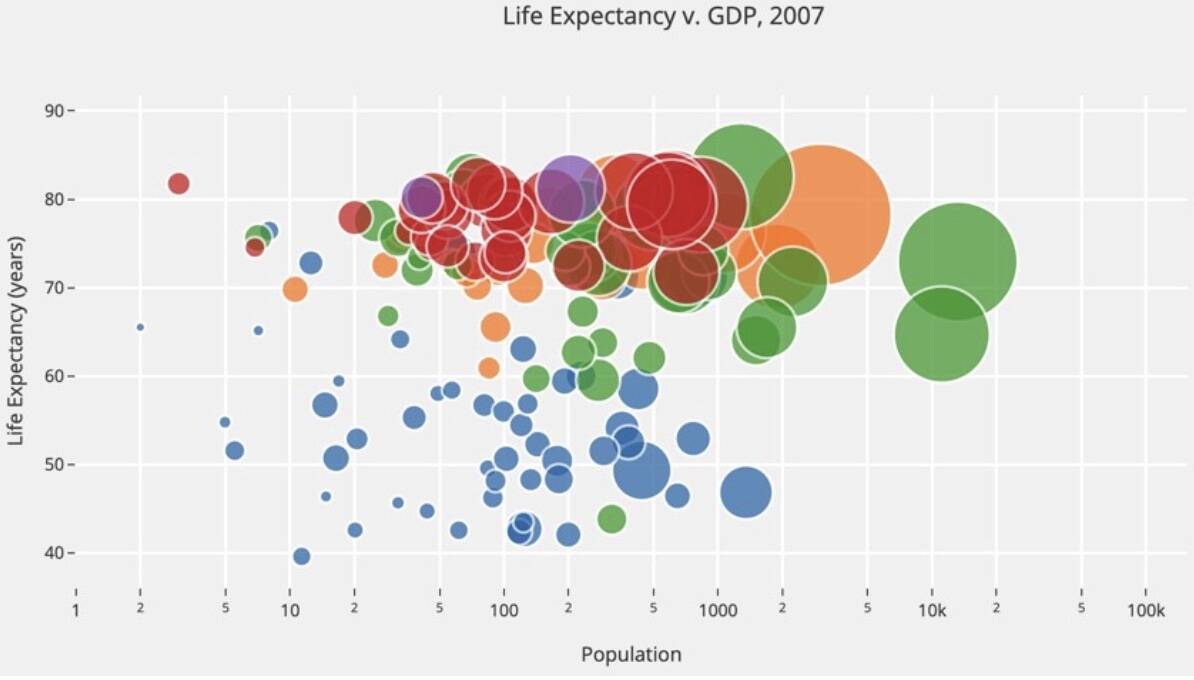Bubble charts are one of the most popular ways to visualize data. They are often used to show relationships between different data points and can be used to show trends over time. Bubble charts are also sometimes used to show clusters of data or to show outliers. Keep reading to learn more about the history of bubble charts and how they are used today.
What are bubble charts?

So, what is a bubble chart? A bubble chart is an information visualization tool that uses filled circles to depict data points, with the size of each circle proportional to the magnitude of the data point. The X-axis represents a categorical variable (e.g., time), and the Y-axis represents a quantitative variable (e.g., temperature). Bubble charts are similar to scatter plots, but they also allow for the inclusion of a third dimension, making it possible to visualize changes in data over time.
The history of bubble charts dates back to at least 1938 when John Tukey first used them in his dissertation on graphical methods for exploratory data analysis. Tukey was inspired by radar displays, which use circular icons to represent objects in space and changes in their position over time. However, bubble charts did not become widely popular until the late 1990s and early 2000s, when they were used by companies such as Microsoft and Google Earth to visualize large amounts of spatial data. Today, bubble charts are commonly used in business intelligence applications and climate change research.
How have bubble charts evolved?
While bubble charts have been around since 1938, they have changed over time. In 2001, David McCandless, a British author and journalist redesigned the bubble chart to make it more visually appealing. He increased the size of the bubbles, added color coding, and made it easier to read by labeling each bubble with its corresponding data point. This new design became known as the “McCandless Bubble Chart.”
Since then, the bubble chart has been used by many different organizations to visualize data in a variety of ways. For example, politicians have used it to show how their policies will affect economic indicators such as inflation and unemployment rates. Businesses have used it to track customer satisfaction or product popularity over time. And healthcare organizations have used it to monitor patient outcomes or disease trends over time.
What are the advantages of bubble charts over other charts?

Bubble charts are a great way to visualize data, as they can show both the size and relative values of data points. They can be used to compare data sets, as well as to identify relationships between data points. In addition, bubble charts can be used to show how data changes over time. There are many benefits to using bubble charts, which is why they are becoming increasingly popular.
Bubble charts are very easy to read and understand. Additionally, you can also compare data points quickly and see relationships between them. They can be used to visualize data with a large number of variables. Bubble charts are also great for comparing data sets that have different scales. Finally, they can be used to show how much a particular data point contributes to the overall picture.
What are the limitations of bubble charts?
Bubble charts are a versatile tool for data analysis and can be used to display a variety of information. However, there are some limitations to bubble charts. Bubble charts are not ideal for displaying small amounts of data. If there are too few data points, the bubbles will be too large or too small and will be difficult to interpret.
Bubble charts are also not ideal for displaying data that is clustered together. If there are many data points close together, they will be difficult to distinguish from one another. Finally, bubble charts are not ideal for displaying data that is spread out evenly across the chart. If the data is evenly distributed, the bubbles will be too small and will be difficult to see.
Bubble Charts are powerful infographics because they provide a comprehensive overview of your data points. This infographic is important because it helps to illustrate the data trends and patterns over time.
Like the history of bubble charts? See some more of my business posts here
